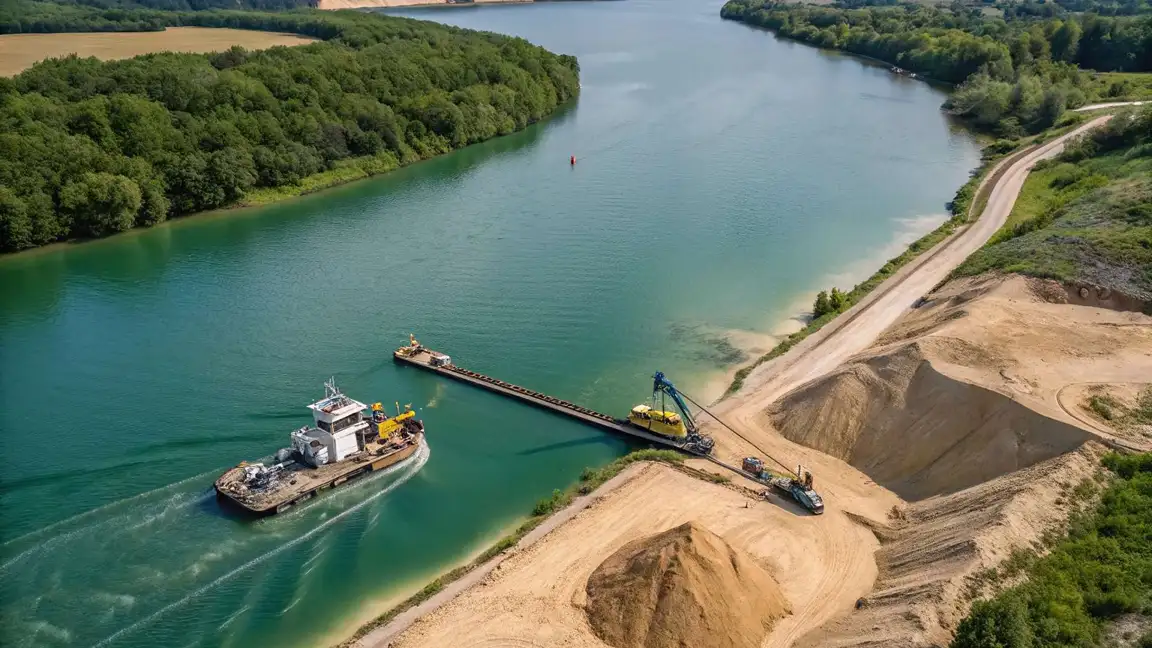Introduction
The Ichamati River, once a vital waterway in Pabna, Bangladesh, is now the focus of a Tk 1,554.90 crore revival project aimed at restoring its natural flow and ecological balance. However, despite initial success, the effort to dredge Ichamati and reclaim its original course has been significantly delayed by legal hurdles and widespread land encroachment. As the project navigates a complex landscape of lawsuits and land disputes, the future of this ambitious initiative remains uncertain.
Project Overview
The dredging Ichamati initiative, officially launched in June last year, spans a three-year timeline and is managed by the Bangladesh Water Development Board (BWDB) in collaboration with the Bangladesh Army’s Engineering Division. The project includes:
- 33.77 km of dredging in the Ichamati River
- 44.07 km of canal dredging
- 20 km of work along the Sutikhali River
- 12.37 km in the Bharara Canal
Beyond dredging, the plan involves large-scale infrastructure development, including:
- 10 km of retaining walls and drainage lines
- 23 bridges and 56 quays
- A 10 km walkway lined with over 42,000 newly planted trees
Once complete, dredging Ichamati will restore river connectivity with the Padma and Jamuna rivers and support year-round water flow through a new pumping station. The riverbanks are also set to become vibrant public spaces and tourist attractions.
Progress So Far
According to project officials, 162 excavators are currently deployed to carry out dredging Ichamati, with 26 km of river and 5 km of canals already completed up to the Fakirpur Bridge. Warrant Officer Md Saiful Islam of the Bangladesh Army, assigned to the project, reported that work is advancing steadily in areas not affected by legal restrictions.
Legal and Land Disputes Stall the Effort
Despite significant headway, the project has hit a major roadblock in a 5 km stretch within Pabna Municipality. Over the years, parts of the Ichamati’s banks were illegally occupied using forged documents. The BWDB initially demolished 1,053 unauthorized structures before starting dredging Ichamati, but since then, 87 court cases have been filed by alleged encroachers, stalling further work in several segments.
Md Mosharaf Hossain, Assistant Director of BWDB in Pabna, confirmed that the project is now entangled in lengthy legal proceedings. “We’re engaging in legal battles, but these processes take time,” he said.
Conflicting Perspectives
While the government and environmentalists push for progress, local resistance has complicated the situation. Md Abdul Hamid Khan, secretary of Bangladesh Poribesh Andolon in Pabna, blamed the disruption on poor planning. He emphasized that the project began without using CS (Cadastral Survey) records for proper river demarcation, which has enabled encroachers to manipulate land ownership through fraudulent means.
On the other hand, many residents claim their documents are genuine and that they’ve lived on the riverbank land for generations. Md Masudur Rahman Mintu, a local figure accused of land grabbing, stated, “We’ve been paying taxes and hold three to four official records. We don’t oppose dredging Ichamati, but if our land is needed, it should be acquired through legal means.”
Administrative Response
Pabna Deputy Commissioner Md Mofizul Islam noted that the administration is actively working to resolve the disputes through the courts. Meanwhile, dredging teams are continuing operations by bypassing contested areas, in compliance with legal restrictions.
Project Director Sudhangsha Kumar Sarkar expressed optimism about the long-term impact of dredging Ichamati, noting that the restored flow, enhanced infrastructure, and ecological benefits will transform the region and boost connectivity.
The Way Forward
The dredging Ichamati project underscores a wider national challenge: balancing infrastructure development with legal processes and community rights. For future projects, experts stress the importance of clear demarcation using cadastral records, proactive land acquisition, and community engagement to avoid such bottlenecks.
If these lessons are applied, the Ichamati revival effort could serve as a benchmark for how Bangladesh can manage large-scale environmental restoration in a lawful and inclusive way.
Conclusion
The dream of dredging Ichamati to restore its natural flow and community value is admirable, but its realization depends on resolving the intertwined issues of land rights and legal complexity. As the Tk 1,554.90 crore initiative moves forward, it offers both hope and caution—a testament to what’s possible with vision and a reminder of the challenges that come with progress.
